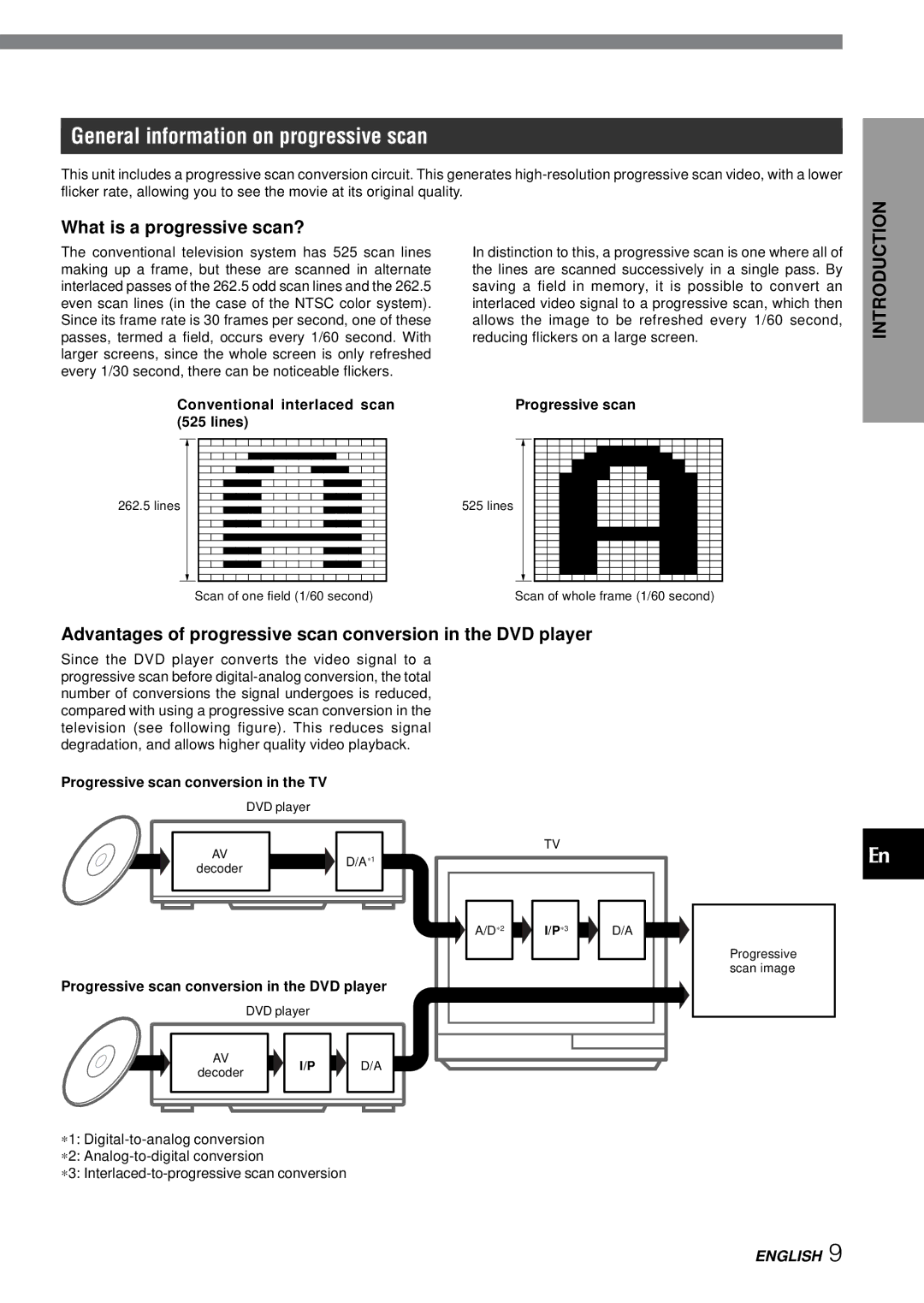
General information on progressive scan
This unit includes a progressive scan conversion circuit. This generates
What is a progressive scan?
The conventional television system has 525 scan lines making up a frame, but these are scanned in alternate interlaced passes of the 262.5 odd scan lines and the 262.5 even scan lines (in the case of the NTSC color system). Since its frame rate is 30 frames per second, one of these passes, termed a field, occurs every 1/60 second. With larger screens, since the whole screen is only refreshed every 1/30 second, there can be noticeable flickers.
Conventional interlaced scan (525 lines)
In distinction to this, a progressive scan is one where all of the lines are scanned successively in a single pass. By saving a field in memory, it is possible to convert an interlaced video signal to a progressive scan, which then allows the image to be refreshed every 1/60 second, reducing flickers on a large screen.
Progressive scan
INTRODUCTION
262.5 lines
Scan of one field (1/60 second)
525 lines
Scan of whole frame (1/60 second)
Advantages of progressive scan conversion in the DVD player
Since the DVD player converts the video signal to a progressive scan before
Progressive scan conversion in the TV
DVD player
|
|
|
|
| AV |
|
| D/A∗1 |
|
|
| ||
|
|
|
|
|
|
|
| ||||||
|
|
|
|
| decoder |
|
|
|
| ||||
|
|
|
|
|
|
|
|
|
|
|
|
| |
|
|
|
|
|
|
|
|
|
|
|
|
|
|
|
|
|
|
|
|
|
|
|
|
|
|
|
|
|
|
|
|
|
|
|
|
|
|
|
|
|
|
Progressive scan conversion in the DVD player
|
|
|
|
|
|
| DVD player |
|
|
|
|
|
|
| |||
|
|
|
|
|
|
|
|
|
|
|
|
|
|
|
|
|
|
|
|
|
|
|
| AV |
|
|
| I/P |
|
| D/A |
| |||
|
|
|
|
|
|
|
| ||||||||||
|
|
|
|
|
| decoder |
|
|
|
|
|
| |||||
|
|
|
|
|
|
|
|
|
|
|
|
|
|
|
|
| |
|
|
|
|
|
|
|
|
|
|
|
|
|
|
|
|
|
|
|
|
|
|
|
|
|
|
|
|
|
|
|
|
|
|
|
|
|
|
|
|
|
|
|
|
|
|
|
|
|
|
|
|
|
|
| TV |
|
A/D∗2 | I/P∗3 | D/A |
En
Progressive scan image
∗1:
∗2:
∗3:
ENGLISH 9
